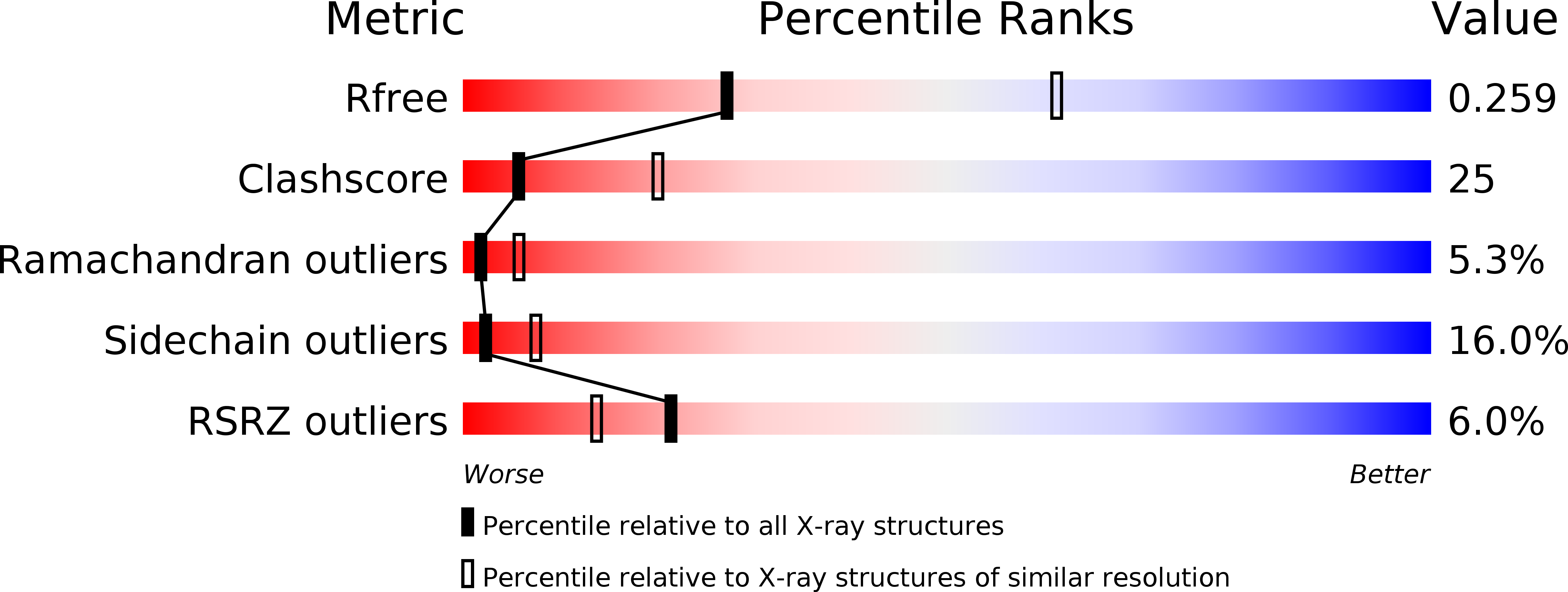
Deposition Date
2011-02-09
Release Date
2011-03-02
Last Version Date
2023-11-01
Entry Detail
PDB ID:
3QOF
Keywords:
Title:
Crystal structure of the cytosolic domain of human atlastin-1 in complex with GDP, orthorhombic form
Biological Source:
Source Organism:
Homo sapiens (Taxon ID: 9606)
Host Organism:
Method Details:
Experimental Method:
Resolution:
2.80 Å
R-Value Free:
0.26
R-Value Work:
0.22
R-Value Observed:
0.22
Space Group:
P 21 21 21


